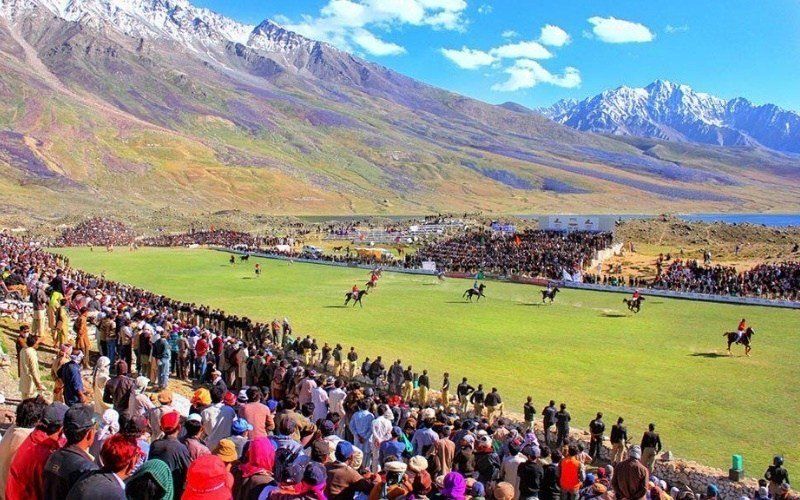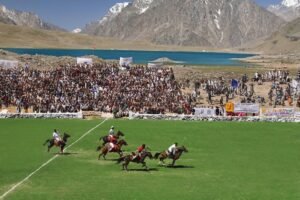Organic dried fruits from the Karakoram Mountain Ranges offer a taste of nature’s bounty, enriched by the pristine environment and sustainable farming practices of the region. There are a variety of climates in the Central Karakoram Himalayas (Gilgit Baltistan).
Organic Dried Fruits Of The great Karakoram Mountain Ranges
The central Karakoram Himalayan tribes Hunza, Nagar, Ghizer, Skardu, and Astore use dry fruits in winter especially to keep the body temperature warm and more energetic however they use them throughout the whole year as the normal snacks but for inner Pakistan and India, it is more of a luxury, having a bulk amount of dry fruits and fresh fruits. Additionally, there are fruit processing facilities for jams, jellies, and juices close to these areas of consumption.
In these circumstances, one option is to process the fruit to extend its shelf life and increase its value so that it can be transported economically over great distances for a long time.
Because it requires a significant investment to capture, solar heating is free and abundant. The available solar energy is nearly 6 Kilowatt hours per square meter per day (20,000 BTUs) on a sunny day. One kilogram of coal or two kilograms of wood can generate that much heat. Fruit that is left outside to dry is subject to the weather. The drying time is days. It has poor quality control and is frequently contaminated by dust or insects. In contrast, food that is dried in a closed box on trays for several hours with warm air has a uniform quality, is easy to control, and is free of dust and infection.
2. Warm and Cold Climate Regions for orgaic Dried Fruit Production
However, the land can be divided into warm and cold climate regions for the purpose of fruit production. The warm plains of Pakistan and India are where citrus, mangoes, melons, and other fruits are grown, while apples, plums, apricots, and other fruits are also grown there. are grown in three distinct regions with cold climates; valley and Gilgit Baltistan.
Throughout the year and at night, air drying is an option. A death chamber and an air heater comprise hot air dryers. An electric fan or blower moves the air between the two chambers. During sunny days, solar air heaters can heat the air. As a result, a system that produces high-quality dried fruit in a relatively short amount of time is both cost-effective and practical. Since it is no longer affected by the weather, the final product’s quality can be easily controlled. The limited amount of sunlight that is available can also be used economically.
3. Candied, Organic Dry Fruit: A Sweet Delight
Fruit is dried once more after being dipped in grape syrup. The dried fruit tastes better because the sugar coats it in a thin layer. In the Middle East and Europe, candied fruits with low sugar content like citrus fruits, mangoes, bananas, and so on are popular.
In this blog post, we embark on a journey to explore the organic dried fruits from the Karakoram Mountain Ranges, delving into their unique characteristics, health benefits, and the sustainable practices that make them a truly special culinary delight.
4. The Karakoram Mountain Ranges: Nature’s Abundance
Stretching across the borders of Pakistan, India, and China, the Karakoram Mountain Ranges are home to some of the highest peaks and most breathtaking landscapes on Earth. The pristine environment, free from pollution and human interference, provides the ideal conditions for cultivating fruits of exceptional quality. The clean air, mineral-rich soil, and ample sunlight combine to nurture fruits that are not only delicious but also rich in nutrients.
5. Organic Farming Practices: Preserving Nature’s Integrity
The organic dry fruits from the Karakoram Mountain Ranges are the result of sustainable farming practices that prioritize the preservation of nature’s integrity. Organic farmers in the region abstain from using synthetic pesticides, fertilizers, and genetically modified organisms (GMOs). Instead, they employ traditional, eco-friendly techniques that maintain the natural balance of the ecosystem. These practices not only contribute to the exceptional taste and quality of the fruits but also promote environmental conservation and the long-term sustainability of the region.
6. Exquisite Flavor Profiles of Organic Dry Fruits
Organic dried fruits from the Karakoram Mountain Ranges offer a symphony of flavors that reflect the purity and vitality of their natural surroundings. Whether it’s the intense sweetness of dried apricots, the delightful tanginess of dried cherries, or the rich earthiness of dried figs, each fruit carries a distinct flavor profile that delights the taste buds. The drying process enhances the natural sugars and concentrates the flavors, creating an explosion of taste that is both delightful and satisfying.
7. Nutritional Powerhouses: Health Benefits of Organic Dry Fruits
In addition to their delicious taste, organic dried fruits are renowned for their nutritional benefits. Packed with essential vitamins, minerals, fiber, and antioxidants, these fruits are a convenient and healthy snack option. Dried apricots, for example, are rich in vitamin A and iron, while dried cherries offer a dose of antioxidants. Dried figs are a good source of dietary fiber and potassium. Incorporating these organic dried fruits into your diet can help support overall well-being and provide a natural energy boost.
Versatility and Culinary Delights
Organic dried fruits from the Karakoram Mountain Ranges are versatile ingredients that can elevate a variety of culinary creations. Add dried apricots to salads or trail mix, use dried cherries in baked goods or as a topping for yogurt, or enjoy dried figs as a healthy snack on their own. Their natural sweetness and unique textures make them a delightful addition to both sweet and savory dishes, lending a touch of natural indulgence to your culinary endeavors.
Conclusion:
Organic dried fruits from the Karakoram Mountain Ranges offer a taste of nature’s bounty, enriched by the pristine environment and sustainable farming practices of the region. With their exquisite flavors, nutritional benefits, and culinary versatility, these fruits capture the essence of their unspoiled surroundings. So, indulge in the pure and natural goodness of organic dried fruits from the Karakoram Mountain Ranges, savoring the fruits of nature’s labor and supporting sustainable practices that preserve the beauty and integrity of this remarkable region.





